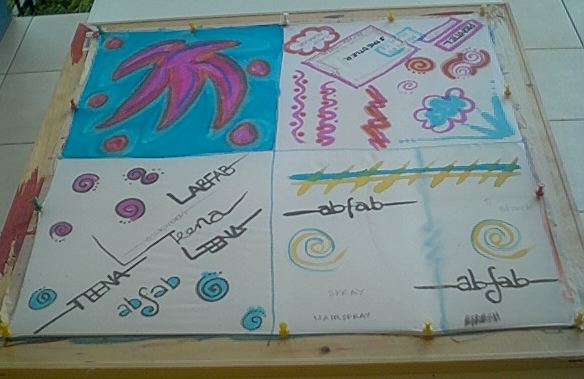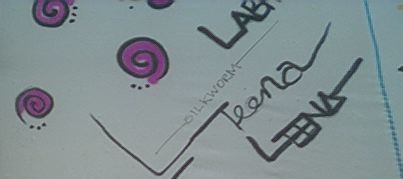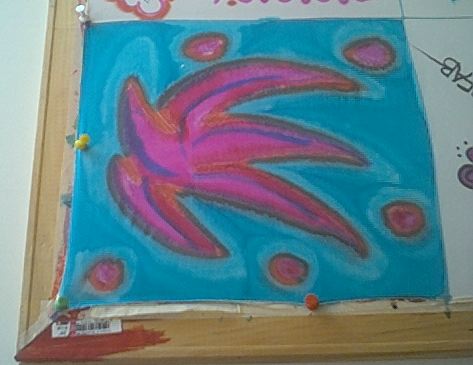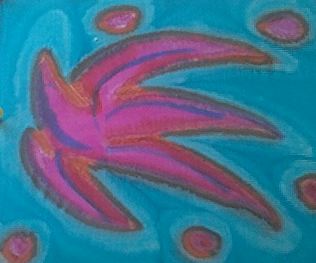|
|
|
|
t e c h n i q u e s 4
Pop-up Index |
Antifuse / Anti-spread
What does THAT mean?So ... why would you want to "anti-spread"? Well, the purpose is to stop the dye flowing across the silk, if you want more control of how the paint spreads (or doesn't).When would you use this? If you wanted to do fine detail (flowers, faces, intricate detail, bird feathers etc) this is a great way to achieve that. And before you ask, yes, you can use more than one technique on a piece of silk! By that I mean you can use the usual quick-spreading silk paint, and when it is dry, you can put an anti-spreading product on (and allow it to dry) before you paint in the fine detail. How cool is that? You can also paint an entire piece of silk using the antifuse technique, whereby the dyes don't spread through the fibres. Where did the "antifuse" word come from? From the French (who invented silk painting ... well, along with the Chinese) word "antifusant", which has been shortened in the translation to English. How many types of antifuse are there?Excellent question! There are tons, some tried and true, others waiting for you to imagine them, invent them and then try them. Some names are:
Things to think about ...
Making your own antifuse1. Solvent-basedAlthough you can buy solvent-based antifuse in stores, you can make your own as follows:
2. Salt-water solution
3. Water-based gutta antifuseBuy this ready prepared at your silk supply store, or make your own by adding water to some water-based gutta in a glass container. Follow drying and fixing required.4. Iron-on StarchGreat results have been achieved by spraying the silk with iron-on starch.You can also make a solution by mixing starch powder and water - mix to a thin liquid which will be a milky colour. Paint on with a brush, allow to dry, paint and fix as required. Note that results from this home-made solution are not excellent, but it's worth a try to see if it suits your purposes. 5. HairsprayI have heard several silk artists say they find this a cheap alternative for an antifuse, but others have said it's really difficult to wash it out after steaming. I'll leave it up to you to try ...After you've antifused ... make notes!After you've put an antifuse on your silk, you can either paint on damp antifuse, or dry antifuse, the choice is yours. I suggest you try all the techniques, and don't forget to make notes in your Silk Notebook which should be in your workshop - if you make notes every time you try something new, you'll be able to go back to your notebook years later and have all your trials and triumphs detailed clearly. You can even put tiny samples of the silk in the book.Good luck, everyone! For more information on handpainting on silk, go to www.google.com and type your question - you'll be amazed at how many fabulous websites there are offering to show you how to do something new. If you'd like to recommend something new for this website, let me know! |
several Polls & Surveys ...
please fill them in and we
will share the results each month.
thank you!
AustralianSilkworm.com © 2003-2004



